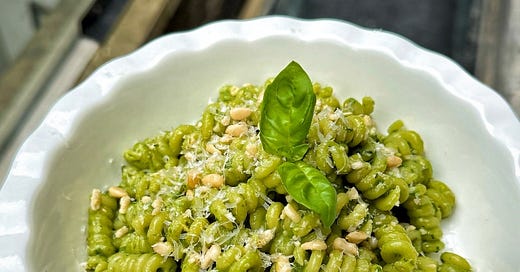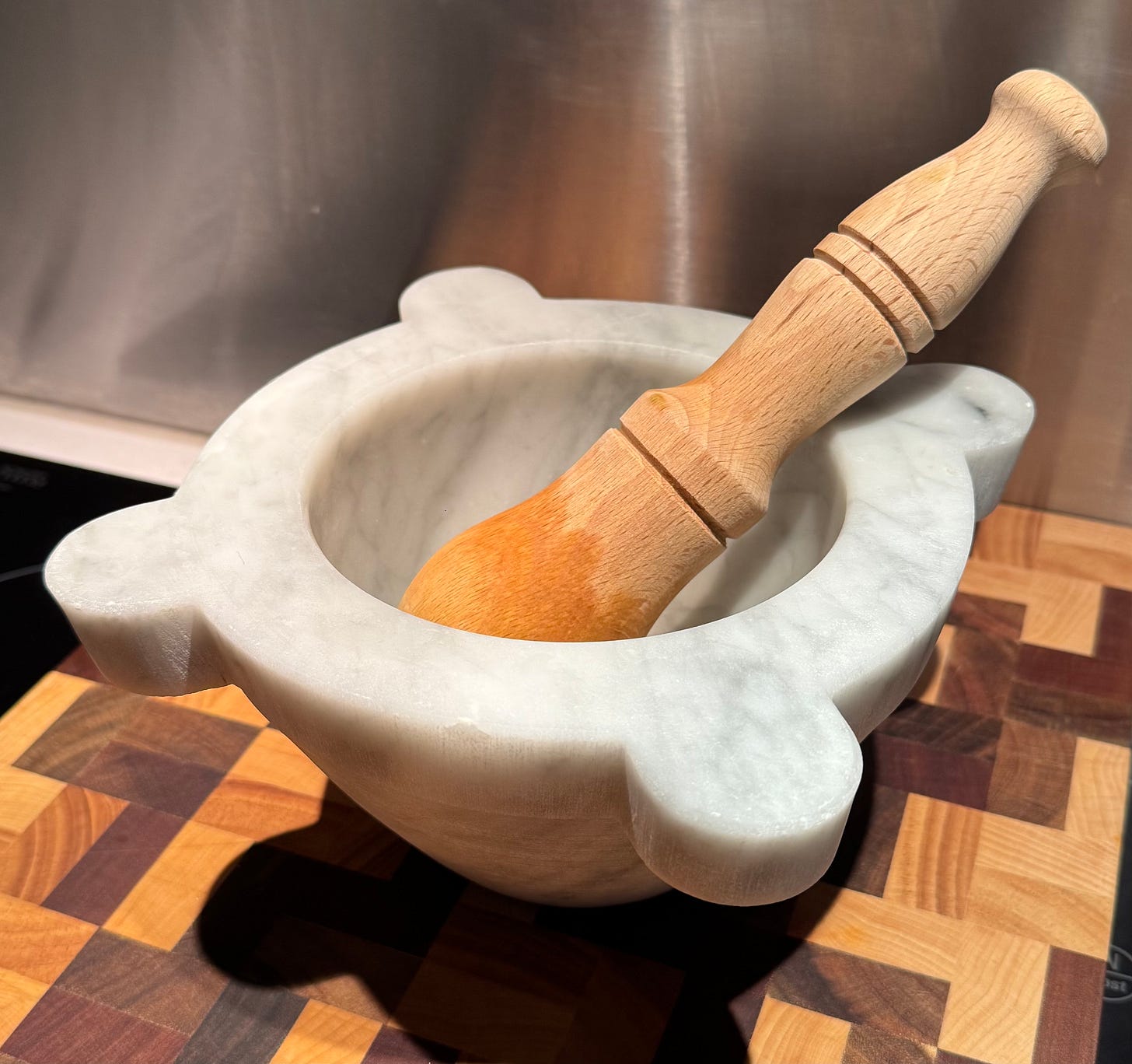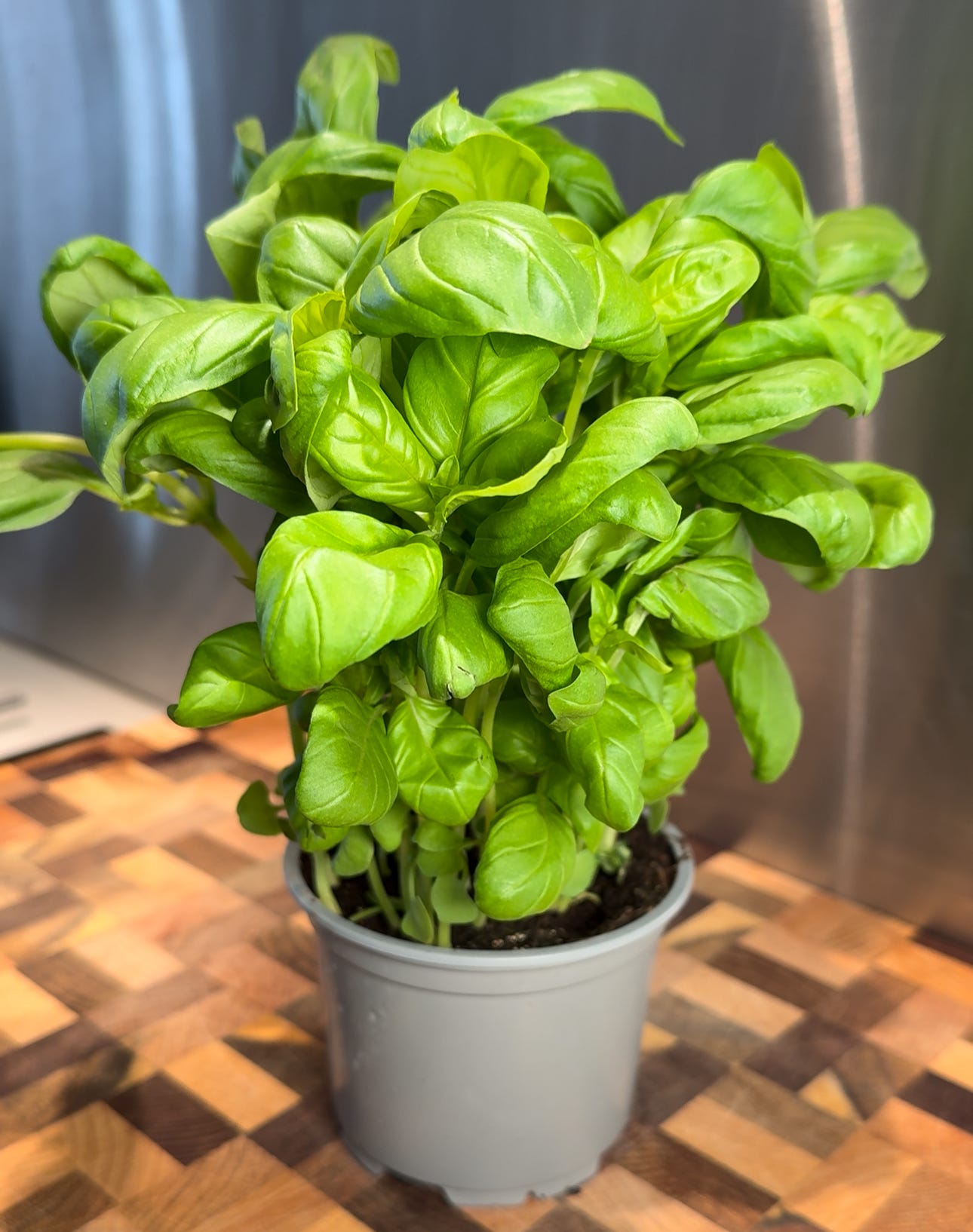Pesto is one of those sauces that is seemingly simple and often overlooked. It can seem basic in many ways, but when you do it properly, it’s so much more than just a boring green sauce. Yes, you can throw everything into a food processor and call it a day, but methods that do this don’t quite yield the right texture or depth of flavour.
Pesto alla Genovese is all about process, patience and high-quality ingredients. The fresh herby aroma and deep green colour are what you’re looking for. In this recipe, I’m going to break down the steps you need to follow to create a truly magnificent pesto sauce. One that fully fuses together all of the core ingredients and can be stored in the fridge to use in pasta, on sandwiches or with proteins.
A solid mortar and pestle is required for this one, so if you don’t have one, get one. It’s by using these two tools that you’ll yield the perfect texture and richness, something that a food processor could never.
I’m by no means re-inventing the wheel here, but merely trying to show you how good this sauce can be. This is the way it’s been done for generations in Liguria. Take your time, do it right, and you’ll never go back to the blender.
What you need to know before you start
Get a good mortar and pestle – I bought mine in Italy and it’s great – a large wooden pestle with a solid marble, slightly coarse texture. You can find something similar here.
Use the right basil – If possible, go for young basil. The smaller, more tender leaves are preferred here, but use what you can get your hands on.
Good olive oil matters – Since olive oil is a key ingredient, use a high-quality extra virgin olive oil with a smooth taste and velvety texture.
Don’t rush the process – Grinding by hand takes time. Be patient, it’s all about coaxing the best out of each ingredient. Take a break if needed, this is a bit of an arm workout.
Go easy on the salt – I call for sea salt in a few of the steps here as it acts as a natural abrasive to break down the garlic and basil. That being said, the Pecorino Romano is naturally salty, so don’t go overboard on the salt.
Choose the right pasta – Fusilli bucati (a thicker, tightly coiled fusilli) is my pick. It grips the pesto perfectly. But trofie or even casarecce work well too.
Listen to this episode with a 7-day free trial
Subscribe to Notorious Foodie to listen to this post and get 7 days of free access to the full post archives.















